Wednesday
Sakyong and FamilyWhat Binds Us as a Community?
by Shelly Webb
photos by Benny Fong
audio courtesy of the Kalapa Court
Chris Stockinger of the Fort Collins Center bowed twice to the ancient microwave in the kitchen of the Boulder Shambhala Center and cheerfully removed his plate of Indian food, nodding to the group of fellow Culture & Decorum Conference attendees who laughed appreciatively and bowed in return.
It was the final lunch of the historic, first-ever “Shambhala Culture and Decorum Conference” and the elegant influences that the Sakyong Wangmo and Sangyum Wendy Friedman had spread to even the most mundane rituals. In her opening remarks, Ms. Friedman spoke of Shambhala culture as “a series of gestures, rituals, symbols, environments, holidays and shared history that bind us as a community and a society.”
The three-day conference, attended by 60 Shambhalians from over 20 centers, including representatives from Land and City Centers as well as Gampo Abbey, was inspired by the Sakyong Wangmo, organized by the Shambhala Office of Culture and Decorum and hosted by the Boulder Shambhala Center. Ulrike Halpern, Executive Director of the Boulder Center and fresh off of hosting a high-energy Shambhala Day, commented on how delighted she was that the Center could, less than 24 hours later, become the container for such an eventful Conference.One theme of the Conference was a quote from the Vidyadhara, Chogyam Trungpa Rinpoche: “If you want to create something sacred, you have to make it look like what you want it to become.”
After Ms. Friedman’s opening talk set the ground, Mr. Steve Vosper, a long-time practitioner and chair of the Sakyong’s Panel on Shambhala Environments, presented on “Sacred Environments” and shared the Vidyadhara’s “vast view” regarding the inseparability of the temporal and the sacred, the spiritual and the ordinary. He then had the participants synchronize space and energy (masculine and feminine principle) by setting forth a challenge for them – prepare a Tea for each other taking the overall environment (the shrine room), using the structures at hand (cushions, tables, objects) and food and libations available, and then set the spark into motion (the aliveness of the attendees)…in fifteen minutes!
This was just one great example of a presenter not only teaching us through words and example, but also through experiential activity and “on the spot” challenge and fun. The same could be said of Alexandra Shenpen, Sensei, who taught on the “Heaven, Earth and Humanity” principle through the use of flowers, which she described as our guests that allow us to “relate to the living quality of the moment and the dot of freshness.” Each participant was asked to close their eyes and was given a flower to get to know; after doing so, three collaborative arrangements were created.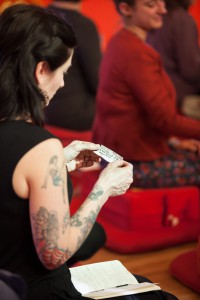 By Tuesday morning, these arrangements had been slightly transformed by Shenpen Sensei, chocolates had been left on our cushions, and gentle classical music played in the shrine room. The attendees were left illuminated by a talk given by John Weber and Mary Sweet, Artists to the Kalapa Court, on “Iconography and Symbolism,” and for the first time the full archive of Shambhala pins was put on display. Participants marveled at the design work created over the past forty years and the ways that words, design, color and images have the power to communicate.
By Tuesday morning, these arrangements had been slightly transformed by Shenpen Sensei, chocolates had been left on our cushions, and gentle classical music played in the shrine room. The attendees were left illuminated by a talk given by John Weber and Mary Sweet, Artists to the Kalapa Court, on “Iconography and Symbolism,” and for the first time the full archive of Shambhala pins was put on display. Participants marveled at the design work created over the past forty years and the ways that words, design, color and images have the power to communicate.
Tuesday afternoon’s panel drew on the wisdom of the participants themselves as Ms. Friedman talked about the rhythm of our Shambhala year and asked others to share what is working in various centers for Nyida Day celebrations. This tied in with Ms. Sweet’s presentation which included this teaching about the qualities of the seasons – Winter=restriction, Spring=celebration, Summer=relaxation, Fall=practicality – in terms of planning events and designing publicity.
As Tuesday afternoon’s talk from the Sakyong Wangmo approached, Ms. Friedman’s wisdom and elegance once again emerged. She allowed some space and asked that we settle the energy in the shrine room. Peaceful music was played and a lovely atmosphere was created as the attendees prepared for the Sakyong Wangmo’s historic first official teaching, and the conference was joined by many guests including the Kalapa Patrons, who were having their own conference elsewhere in the center. The Sakyong Wangmo began by singing three beautiful chants, enriching the space and immediately transporting the room and claiming our hearts. Then, further bringing us into her world, she shared stories of her family lineage, paying homage to the many strong women practitioners who raised her and thanking them for the wisdom, compassion, kindness and genuineness that they shared with her. She told us that one of the many inspirations for this Conference was her curiosity about the Shambhala pins. This curiosity drew her further into talking with the Sakyong and others about Shambhala culture, and she became inspired to find out more about how culture manifests in this lineage and in our Centers.The Sakyong Wangmo expressed her experiences beautifully and then responded to several themes of questions that participants had raised, such as “How do we include families and children?” and “How do we find warmth within the form?” Finally, the Sakyong Wangmo gave a wonderful answer to the most difficult question – “What do we do when form provokes irritation or when people don’t want to participate in the form?” Her answer touched on coming back to our own practice, being willing to reflect on our own approach and willingness to let go of the form if we are being too tight. All in all, the Sakyong Wangmo’s first formal talk, and her delight in the topic of culture was a joy.
Click on the play button below to listen to a clip from the Sakyong Wangmo’s teaching:
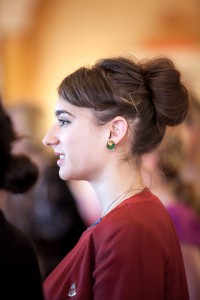
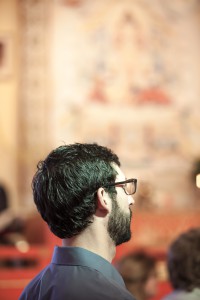 The third day of the Conference was filled with more learning and the continued building of collegiality amongst the group. It should be said that part of what made the Conference so successful was the excellent support that it received from the local Coordinator, Ms. Jackie Chavarria and her team. Not only did they support Ms. Friedman and her vision for a gracious and multi-textured Conference, they also were able to work with a continually busy Boulder Center, even pitching in to help with setting up a Tuesday night Werma Feast with the Sakyong when last-minute volunteers were needed. Elegance in action indeed!
The third day of the Conference was filled with more learning and the continued building of collegiality amongst the group. It should be said that part of what made the Conference so successful was the excellent support that it received from the local Coordinator, Ms. Jackie Chavarria and her team. Not only did they support Ms. Friedman and her vision for a gracious and multi-textured Conference, they also were able to work with a continually busy Boulder Center, even pitching in to help with setting up a Tuesday night Werma Feast with the Sakyong when last-minute volunteers were needed. Elegance in action indeed!
Wednesday’s teachings included a presentation on “Ritual and Ceremony” with a beautiful filmed piece from Acharya Noel McLellan, a talk by Mark Thorpe, Master of the Kalapa Court, and another small-group creative exercise where we created 1 minute rituals on topics ranging from a wedding to the ceremony of changing a light bulb. Ms. Friedman concluded the afternoon with a summary of everything the group had been presented with and then left them with the words, “Shambhala culture is only meaningful if we give it away and offer it to others,” reminding us that Shambhala culture has the potential to magnetize and inspire people in this dark age, it is not concrete and should not be learned as a badge of ego or a credential. Rather, it binds us together and is the outer manifestation of our inner principles.
All of the participants were touched when we heard the news that the Sakyong and Sakyong Wangmo wanted to invite all of us to their home, the Kalapa Court, for a final reception. The lovely event was warmly hosted by the Mukpo family and the Court staff, and included a spontaneous talk by the Sakyong, refreshments, toasts and a lively sing-a-long, led by the Sakyong Wangmo! As participant Katrin Welch of the San Francisco Center commented, “The Conference teachings were so powerful because they encompassed practice and daily life. There was no difference between the teachings, the space we used and created, and the decorum and behavior of all involved.”

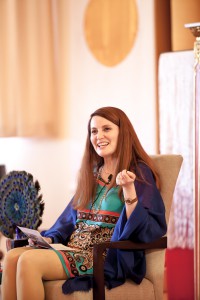
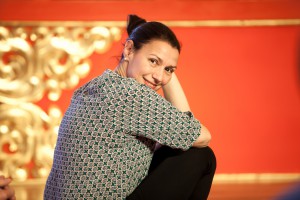
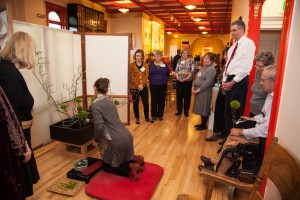
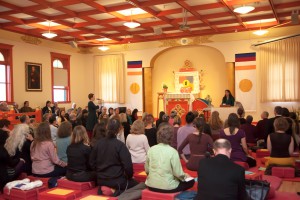
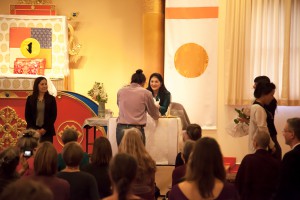
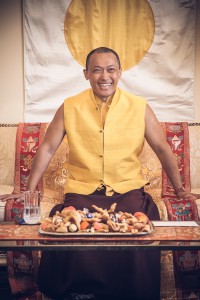
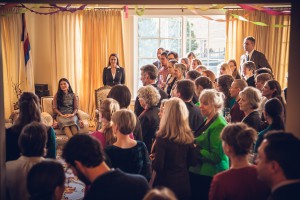
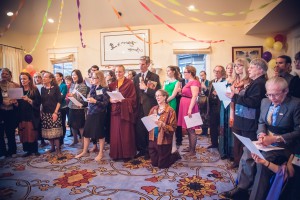
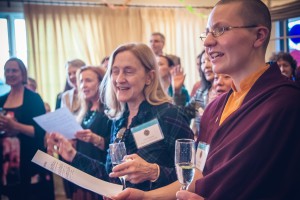
















Mar 21, 2014
Reply
Excellent article about our inspiring Conference! Thank you Sangyum Wendy Friedman for all your energy in making it happen and Thank you to our Sakyong Wangmo for your presence and contributing to our experience!
Mar 20, 2014
Reply
Hi Alex –
We sang two Shambhala songs written by the Sakyong and Sakyong Wangmo
“We Are the Warriors” and “Wake Up to Your Life” followed by one of the Sakyong Wangmo’s
favourite songs “My Favourite Things” from The Sound of Music and finally The Shambhala Anthem.
Mar 20, 2014
Reply
We sang “Wake Up to Your Life”, “We are the Warriors”, “My Favorite Things”.
Mar 19, 2014
Reply
What songs did people sing during the sing along?